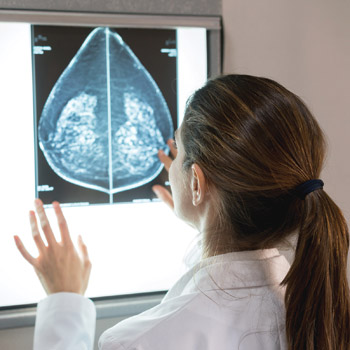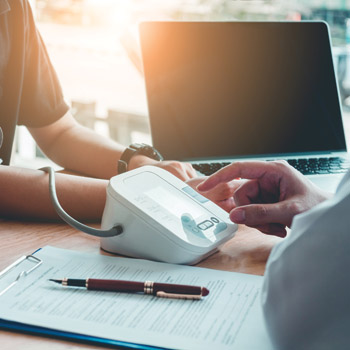When will it be safe to resume economic and social activities?
ACP's guidance on easing social distancing suggests that “Is it time to reopen the economy?” is the wrong question to ask.
As I write this, the United States continues to be in the grip of a pandemic that has infected more than a million people and killed more than 90,000, with the count still rising in many parts of the country, leveling out in others, and perhaps starting a slow decline in some. Yet lack of testing, premature lifting of social distancing requirements, confusing and mixed signals from federal, state, and local authorities, and pockets of public defiance to safe COVID-19 mitigation practices could undo progress that has been made from social distancing. Under even the more optimistic scenarios, the U.S. is likely to see tens of thousands of additional deaths before cases and mortality consistently decline and effective treatments become available, never mind a vaccine, which may be a year or more away.
Public health experts agree that the most effective approach to flattening and then lowering the curve is social distancing. Yet indefinitely “locking down” everyone can cause its own harm to the emotional, mental, and financial health of individuals and families. Prolonged periods of loneliness and confinement can lead to anxiety, stress, and depression, more misuse of alcohol and other substances, and higher risk of domestic abuse and violence. The toll on people losing jobs or closing their businesses, not being able to pay their rent or mortgage, not being able to afford food and clothing, and their children not being in school grows with each day of isolation and confinement.
No wonder that federal, state, and local authorities are grappling with what to do next, likely the most consequential decision they will make in their public lives. It is also a decision we all must make on when we are ready to go back to our workplaces and to movies and restaurants, to resume seeing family and friends, even if “allowed” by public authorities. Employers must also decide if and how they will reopen when restrictions are lifted. Physicians must decide how and when they should begin bringing more patients back into the office. Then there are millions of Americans who have no real choice: Either they go back to work, or they get fired.
To help people decide, the American College of Physicians issued “Partial Resumption of Economic, Health Care and Other Activities While Mitigating COVID-19 Risk and Expanding System Capacity: A Clinical and Public Policy Guidance from the American College of Physicians.”
The guidance suggests that “Is it time to reopen the economy?” is the wrong question to ask. “ACP is concerned words like ‘re-open the economy’ implies that the decision governments, public health authorities, employers, and health care delivery systems must make is a binary choice: one either ‘opens up’ the economy or keeps the economy ‘closed.’ This is false and misleading, creates unnecessary conflict, and hampers decision-making. ACP believes that the United States instead should chart a way forward to allow certain economic and social activities to be resumed in a phased and prioritized way, based on the best available evidence, in a manner that mitigates risk (slows and reduces the spread of COVID-19, and associated deaths and other harm to patients) and rapidly expands health system capacity to diagnose, test, treat, conduct contact tracing (with privacy protections), and conduct other essential public health functions.”
The paper then offers 18 recommendations on what would be needed for certain economic, social, and health care activities to be partially resumed. The recommendations address:
- ensuring that communities have sufficient testing and follow-up,
- prioritizing case finding, screening, and surveillance to track and reduce further spread, especially for those at an increased risk for COVID-19,
- encouraging voluntary self-isolation for any patient who tests positive for SARS-CoV-2 or who has been exposed to a patient who tested positive,
- developing public reporting of performance expectations for molecular or serological tests,
- ensuring adequate health care system capacity,
- facilitating effective contact tracing with privacy protections,
- initiating a gradual resumption of economic and social activities when new cases have steadily declined,
- employing a risk-based assessment to prioritize the order in which certain sectors can resume some activities,
- developing an effective communication strategy to ensure community engagement in mitigation measures,
- maintaining evidence-based best practices to slow and reduce transmission of COVID-19,
- resuming in-person medical care visits and other health care services guided by community capacity for COVID-19 mitigation,
- providing direct support to physician practices to offset lost revenue,
- issuing recommendations on how ambulatory internal medicine practices might safely and effectively begin to resume in-person visits, and
- detailing resources required from the federal government to support testing and follow-up, personal protective equipment, and health system capacity.
At a time when the U.S. should stand together to minimize loss of life and other harms from COVID-19, the country is becoming increasingly fractured about what to do next, egged on by politicians, commentators, and activists who live off chaos and discord. Yet I suspect most Americans want to hear from the people they trust most with their health—physicians—on what public health authorities need to do to keep them as safe as possible. ACP's guidance offers them the perspective of internal medicine physicians who, above all else, want to keep them healthy and safe, whether at home or when they are able to return to work because the country has put in place the steps needed to keep them healthy and safe.





